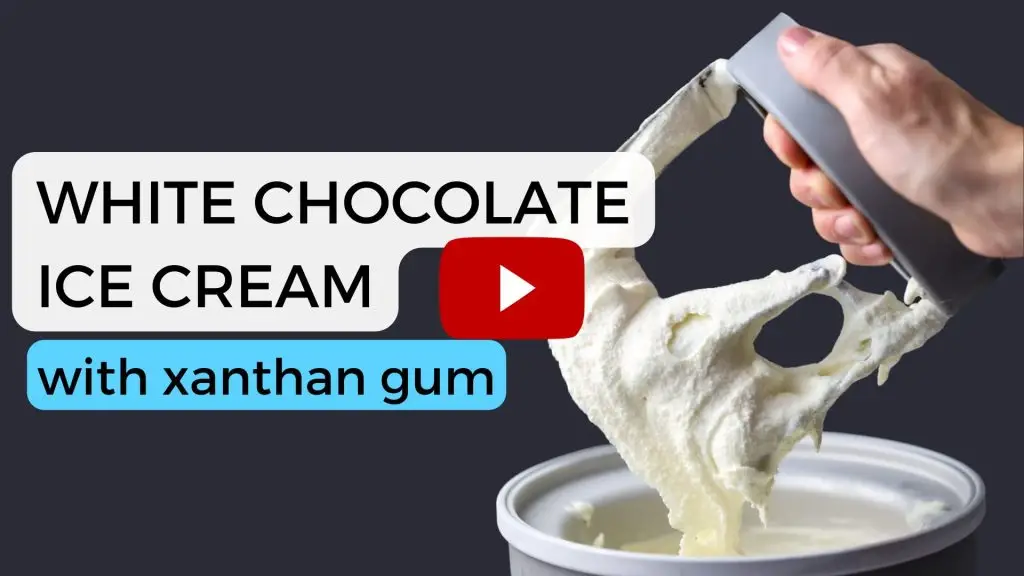This ice cream is ready when it is creamy and wavy. The total churning atime depends on your ice cream maker and could be anywhere from 30-70 minutes.
To evaluate if it is ready, lift a spoonful; it should be thick enough to stand on the spoon, but it will still be soft like soft-serve ice cream. If it looks watery or starts to melt the moment you spoon it, leave it to churn for longer.
In any case, if you feel doubts about the consistency, leave it to churn for ten minutes more. But beware: at this stage, do not expect it to be like store-bought carton ice cream; for now, it should be more like soft-serve ice cream. It will firm up and become like store-bought ice cream only after it sets in the freezer.
So, stop the ice cream maker when the ice cream is smooth and pliable. If you leave to churn it for much longer, it will start turning grainy.
Warning: some ice cream makers are programmed to stop after a specific time, which doesn’t make sense because the ice cream may need to churn for more to reach its fullest potential. So, if you notice that your ice cream maker stops on its own and upon checking the ice cream, you find that it is sloppy instead of fluffy, try to turn the machine on again and leave it to churn until it reaches the desired texture.
















